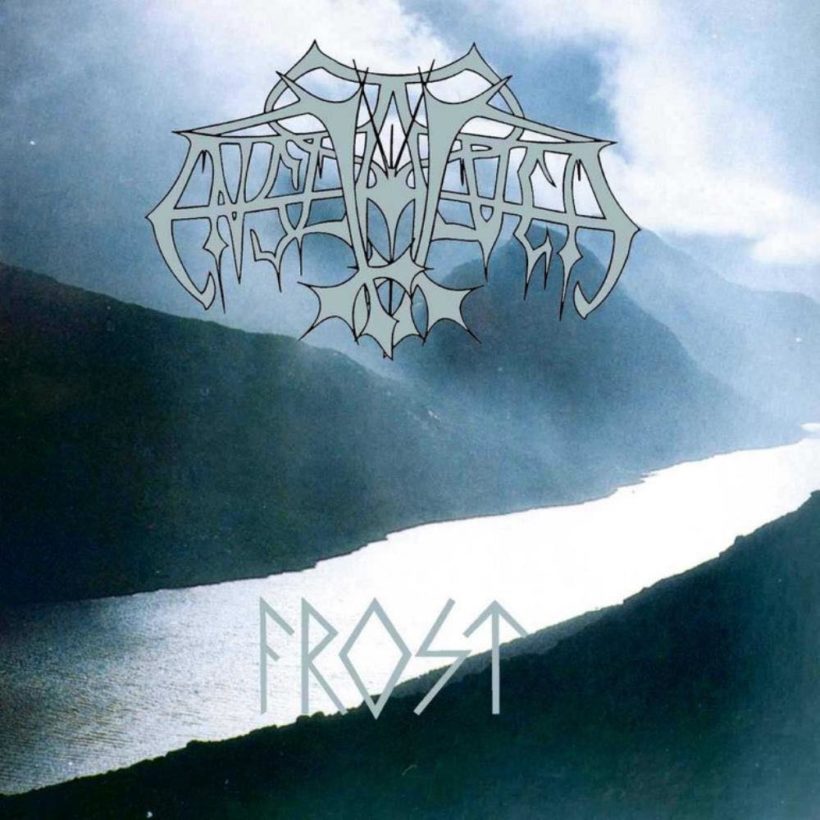
DB HOF NO. 60
The making of Enslaved’s “Frost”
released: 1994
label: Osmose
—————————————————–
If black metal was defined by a single year, it would have to be 1994. Not a single calendar year before or after could possibly compete with—in sound, vision and diversity—De Mysteriis Dom Sathanas, In the Nightside Eclipse, Hvis Lyset Tar Oss, Suomi Finland Perkele, The Shadowthrone, Bergtatt, Transilvanian Hunger and Opus Nocturne. Though the second wave of black metal had crashed a few years before, the biggest wave was in 1994. And with it, the second wave of Viking metal.
The first Viking metal wave was nothing like the second, however. The unifying bonds—cultural history, geographic location, a connected (via post offices worldwide) underground network—just weren’t there. Nevertheless, proto-Viking metal was. As early as the late ’70s, in fact. Faithful Breath could be viewed as the genesis, replete with fur and horned helmet costumes and epic album art (check out Back on My Hill). They weren’t the only ones either. Sweden’s Heavy Load purloined Nordic myths and imagery in the early ’80s. As did Norwegians TNT, for one album. But the true innovator was Bathory. Over three albums—Blood Fire Death, Hammerheart and Twilight of the Gods—the Quorthon-fronted outfit braved it all to create the first-ever cohesive metallic tribute to the Vikings.
So influential and symbolically important were these records that they inspired three Norwegian teenagers, one as young as 13, to form Enslaved in 1991. Though the trio’s first foray into Viking metal was enough to ink a deal with then-cult label Deathlike Silence Productions, it’d take an EP, Hordanes Land, and a debut album, Vikingligr Veldi, for Enslaved to find a (left hand) path of their own. Enslaved had arguably fara I Viking-ed on Hordanes Land, but internally they—particularly guitarist Ivar Bjørnson and frontman/bassist Grutle Kjellson—knew songs about battles, desolate snow-capped mountains and fjords could only go so far. This was stuff for neophytes and surface-dwellers, not a group of intellectually- and culturally-motivated teens.
Enslaved’s fingerprint—Bjørnson’s quirky chords and berserk arrangements, Kjellson’s battle-worn caterwaul and Trym Torson’s deft blasting—remained intact on second album Frost, but for all intents and purposes, this album marked the beginning of a long sonic and philosophic sojourn. First and foremost, Bjørnson dialed back on Vikingligr Veldi’s theme repetition. Gone were the endless riff cycles of “Midgards Eldar” and “Lifandi Liv Undir Hamri.” And Kjellson dove headfirst into Norse myth. He was less concerned about the retelling of Thor’s fateful encounter with the Midgard Serpent than the root of the conflict. Kjellson knew it was time to reclaim the gods and goddesses of his ancestors, especially if it meant his version of things would inevitably clash with the Christianized fairytales so often associated with Nordic myth. And, finally, Enslaved—out of respect for and to differentiate themselves from a burgeoning black metal scene—had branded the term Viking metal on Frost. Officially.
Decibel is hereby honored to induct Enslaved’s Frost, the first (and possibly the last) Viking metal record, into the Hall of Fame. As stated in one translation of a Hávamál passage: “Cattle die / and kinsmen die / And so one dies one’s self / But a noble name / will never die / If good renown one gets.” See you in Valhalla, guys! —Chris Dick
To read the entire article, purchase this issue from our online store.




